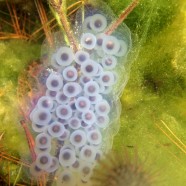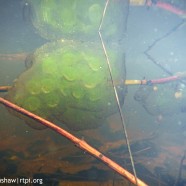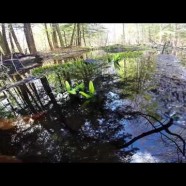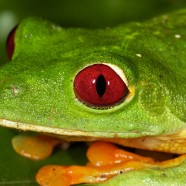Do you know your amphibian egg masses?
Despite the snow, the internal clocks of many amphibians are already set to spring. As a result, a number of them have already journeyed from the safety of their winter refuges to nearby pools and ponds to breed and deposit their eggs. This past Friday, prior to the weekend storm, I spent time exploring some local water bodies and found a plethora of these kinds of eggs. Any idea of what these little eggs will eventually turn into? I’ll give you a hint, the bottom picture shows both eggs and spermatophores. If you guessed Spotted Salamander (Ambystoma maculatum), you would be correct!...
Read MoreBouncing Babies
Here we have some bouncing baby…umm, boys and girls I would guess. These spotted salamander (Ambystoma maculatum) babies will soon be hatching from their globular masses and become veracious predators in the little vernal pools in which they temporarily reside. As they feed and grow, they will be racing against the clock in order to develop from free swimming legless tadpoles into four legged land dwellers before their nursery pool dries out towards the end of the summer. Talk about rapid development! Elyse Henshaw Conservation Technician
Read MoreProductive Vernal Pools
Have you ever wondered what might be hiding just beneath the water’s surface in these temporary pools that crop up in early spring? This little clip reveals a productive vernal pool that has a number of spotted salamander (Ambystoma maculatum) egg masses nestled within the leaf litter of the pool floor. These pools are an important breeding area for several amphibian species, as you can see, because they provide a safe fish-less environment for the eggs and eventual tadpoles to...
Read MoreRed-eyed Tree Frogs
When I’m not engrossed in avian research my focus gets drawn to reptiles and amphibians. While visiting the Karen Mogensen Nature Reserve we found this nice population of Pacific phased Red-eyed Tree Frogs (Agalychnis callidryas). Around the main pool we found a few masses of eggs that were in various stages of development. The next find was particularly exciting for me – individuals in amplexus. That means during the courtship of this species the female carries the male on her back before copulation. We proceeded to find a few other individuals in the immediate vicinity....
Read More







